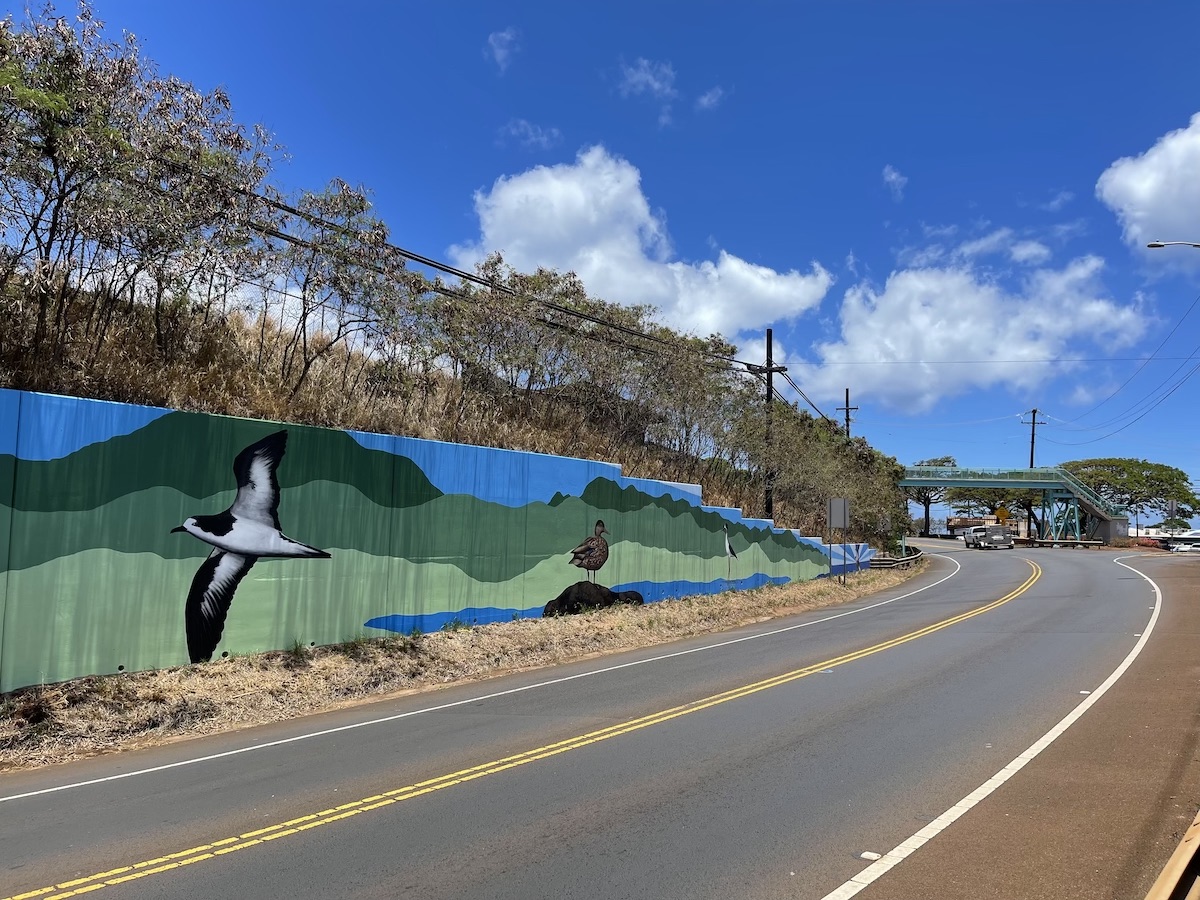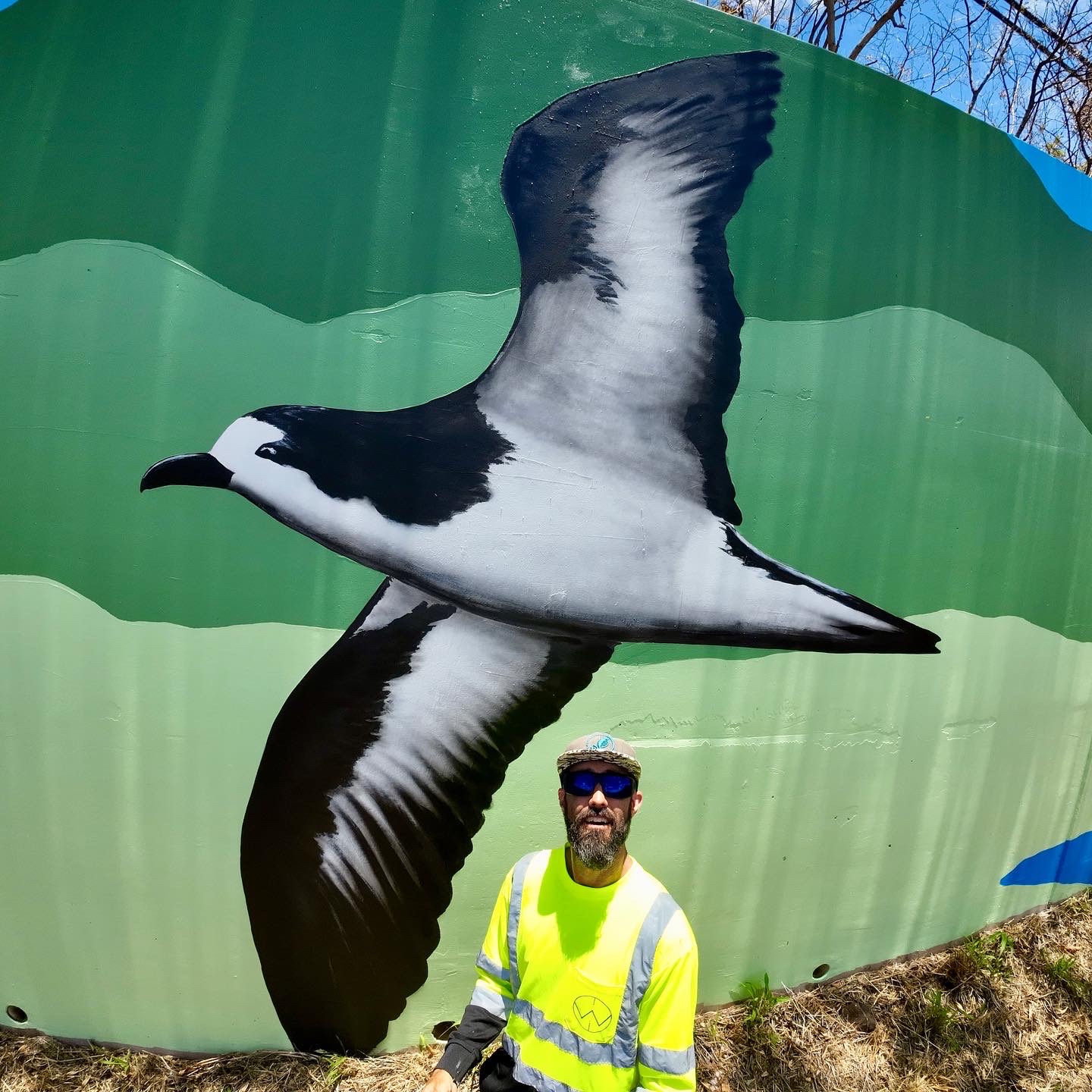
© Seth Womble
Post submitted by Helen Raine, Pacific Birds Hawai'i Wetlands Conservation Coordinator.
To celebrate Kauaʻi’s native birds and their strong cultural connections with the Hawaiian people, Pacific Birds teamed up with Seth Womble of Nirmana Projects on a successful grant application to the Hawaiʻi Tourism Authority. The result is a spectacular mural in Hanapēpē, West Kauaʻi. The artwork takes the viewer on a journey from the wetland birds of the lowlands to the high-altitude mountain burrows of the seabirds and builds on the town’s reputation as an art hub. Watch as the mural is created.
Kauaʻi ranges from sea level to more than 5,000 feet in elevation, with unique lowland and upland habitats that support bird life. The island is home to five endangered species of waterbirds and three species of seabirds that are endemic to the Hawaiian archipelago.
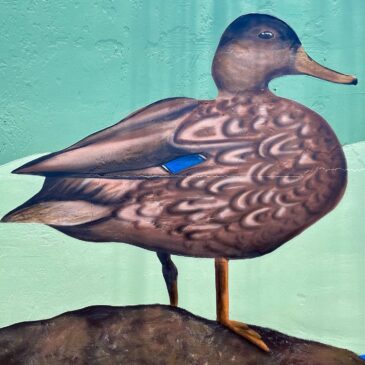
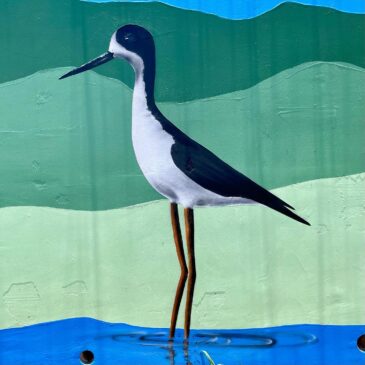
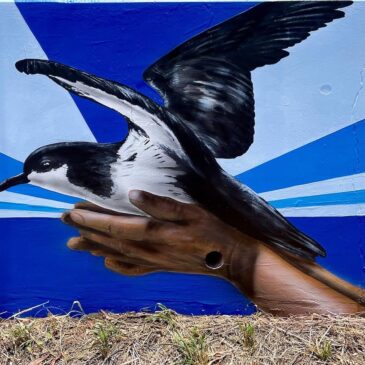
The mural birds are the Ae’o, the Koloa Maoli, the ‘A’o and the ʻUʻau. Our hope is that bringing these endangered local birds into the communities’ day to day view will remind us of the importance of being good stewards of the land and animals here.
– Mural artist Seth Womble
These native birds connect the makai (coastal) and mauka (upland) habitats. The graceful Ae'o (Hawaiian Stilt, Himantopus mexicanus knudseni) frequents lowland and freshwater habitats. Koloa Maoli (Hawaiian Duck, Anas wyvilliana) uses both lowland wetland areas and the high-altitude Alaka‘i Swamp for feeding and breeding. Seabirds like the ‘A’o (Newell’s Shearwater, Puffinus newelli) have played a vital role in transporting the guano and seeds that created our unique native upland forests. The mural showcases this intimate relationship with the land.
Native Hawaiian wildlife is intimately bound up with Hawaiian culture. The mural highlights those connections, depicting birds that thrived in the kalo lo‘i (taro patches) as Hawaiian indigenous agriculture expanded. That relationship between bird habitat and sustainable food production is still strong.
The lowland westside community of Kauaʻi also has essential wetlands for these endangered waterbirds, including Salt Ponds, Kawaiʻele Waterbird Sanctuary and the Mānā Plain. The town of Hanapēpē is on the road to Kōkeʻe State Park, where upland, montane habitats support Nēnē, Koloa Maoli, ʻAʻo and and two other endangered seabirds – U‘au (Hawa’ian Petrel, Pterodroma sandwichensis) and ‘Akē‘akē (Band-rumped Storm-petrel, Oceanodroma castro).
When people next see waterbirds at Salt Pond, in the Hanalei National Wildlife Refuge, or Waimea loʻi kalo, the mural project team hopes that it will be a ‘light bulb’ moment about the value and beauty of our native species. This street art speaks to the idea that birds are part of daily life and invites us to connect, protect and promote their conservation.
